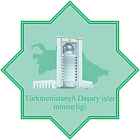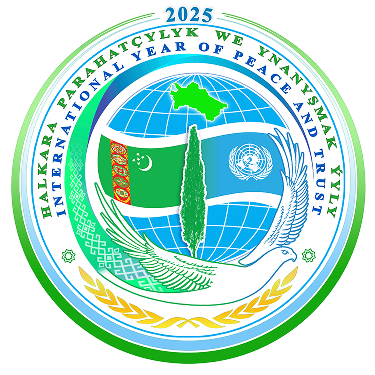of Peace and Trust»




By joining the UNESCO Convention Concerning the Protection of the World Cultural and Natural Heritage, Turkmenistan systematically carries out large-scale work on safeguarding the historical and cultural, as well as natural values, being an integral part of the world civilization.
The State Historical and Cultural Park “Ancient Merv” (40 kilometers far from the city of Mary) is one of the oldest and to a large extent well-preserved oasis cities situated on the Silk Road in Central Asia and one of earliest that have adopted irrigation. Therefore it is unsurprising that one of the major cities of the ancient world has originated here: Merv (Margush, Margiana, Maru). It was one of the major cities of not only Central Asia, but also the whole world. The exact time of its appearance is unknown and its origination is veiled with mysteries. One thing is clear – the first written reference to it appears in the Avesta scripts, approximately in VIII-VI centuries B.C.
The Ancient Merv comprises of a system of monuments constructed in different times due to the change of the bed of the Murgab River and its eventual shift from east to west. The new facilities were built after the old ones were abounded and never again inhabited thus becoming the “custodians of memory.” Archaeological layers were not touched by subsequent development, so the ruins of massive earth structures retain the features of initial construction which did not undergo reconstruction or alterations.
In the history of civilization of East, and even of the whole world, not many ancient settlements were honored with the name of “Mother of Cities”. The Ancient Merv was one of such cities, about which the famous traveller and scientist Al-Makdisi wrote, “The Mother of Cities in Hijaz is Mecca, while in Khorasan – Merv”.
The Merv oasis stood as a gigantic megalopolis of those times, which did not have equivalents in Central Asia. On the crossroads of the Antiquity and the Middle Ages, Merv occupied a territory of 235 hectares just within its city fortifications, which also encompassed the trade suburbs and extensive agricultural district which by many times exceeded the area of the city.
On the frontiers of millennia, Merv became the largest city through which the trade ways passed in all directions, that is current Uzbekistan, Afghanistan, Iran, India and other countries. In the beginning, the city was dwelled by the Zoroastrians, then the Buddhists came, and in the III century they were joined by the Christians. But in VII-VIII centuries, the Arabs came to these lands and established the main dominating religion, the Islam.
Merv attained its apogee in the Islamic epoch and became the capital of the Arab Caliphate in the beginning of the IX century and the capital of the Great Seljuk Empire in XI-XII centuries. Libraries and educational institutions started to appear here, and a large flow of migration from neighboring countries came. Storytellers assigned bright epithets to the city, calling it “the Soul of King”, “Mother of Khorosan cities”, and finally “the City on which the Universe thrives”. Omar Khayyam, As-Samani, Imad ad-Din al-Isfahani and other renowned thinkers of the Middle Ages lived and created here.
Merv developed and grew during a number of centuries and in the XII century reached the pinnacle of its development by gaining the status of the largest city of the world. The monument of ancient magnificence was the noble Mausoleum of Sultan Sanjar, the construction of which started in 1157. During the rule of Seljuqs, Merv reached the heights of prosperity, enlightenment and recognition of the well-wishers. It was vital to note that the cities of Merv oasis made a great contribution to the cultures of Central Asia and the whole East during four centuries. The city of Seljuqs especially affected the architecture and architectural decoration, as well as the scientific and cultural development. The uniformity of the Merv oasis cities, their fortifications and city plan serve as a unique proof of existence of Central Asian civilizations for several centuries.
A number of fortresses of Merv belonging to different epochs are marked out. They differ by size and preservation level. These are Erk-Kala (VI century B.C.), Gyaur-Kala (III century), Kyz-Kala (VI century), Sultan-Kala (XI century), Abdullahkhan-Kala (XV century), Bayramalikhan-Kala (presumably XVIII century).
In 1999, the Ancient Merv was entered into the World Heritage List of UNESCO. Today, asphalted roads are laid in Merv for tourist transport and a reconstruction of distinct constructions is continuing. The functioning Mosque of Yusuf Hamdani is located on this territory which is visited by pilgrims from all over Turkmenistan and the neighboring countries.
Nature protection actions implemented on the territory are focused on the elimination of potential dangers, such as the anthropogenic change of landscape and the impact of environmental factors, including deflation, increase of groundwater levels and consequent salting of the earthen buildings.
The State Historical and Cultural Park “Ancient Merv” and all of its archeological and architectural sights were entered into the World Heritage List of UNESCO in 1999.

